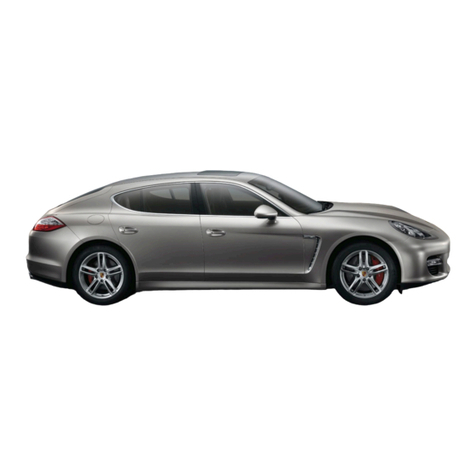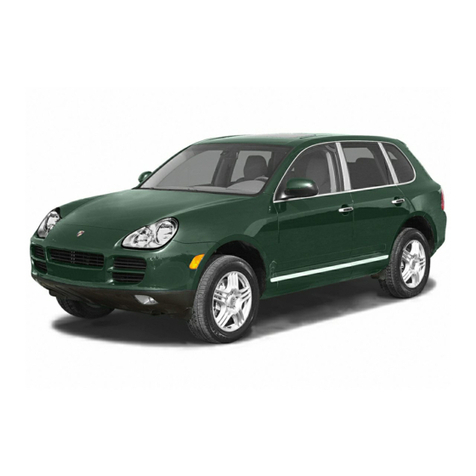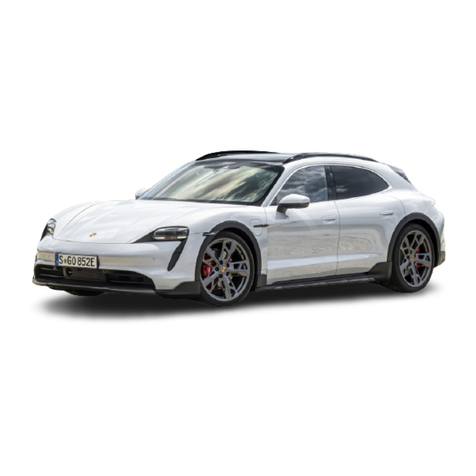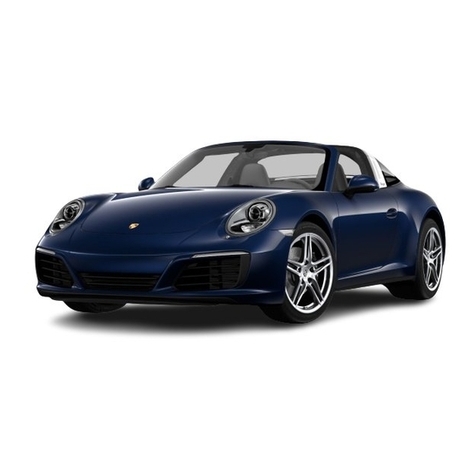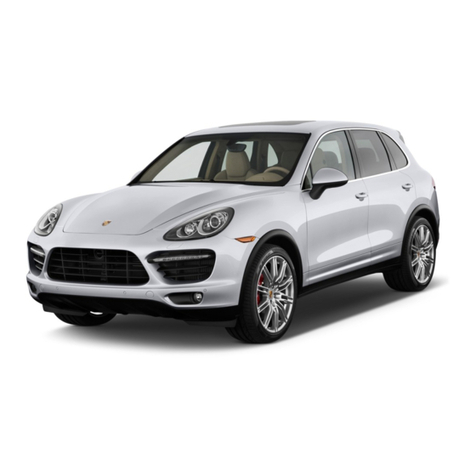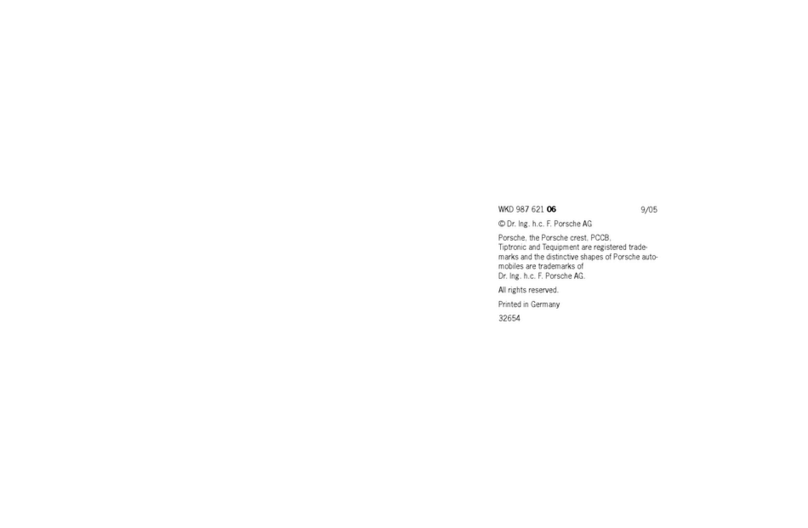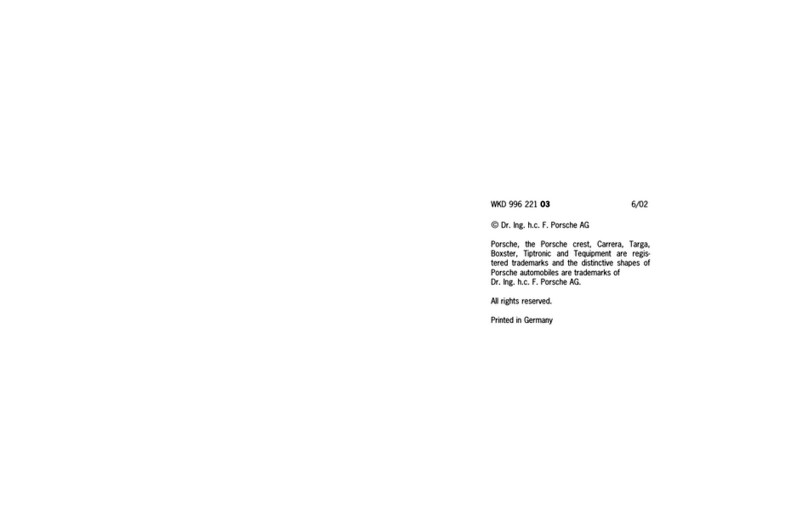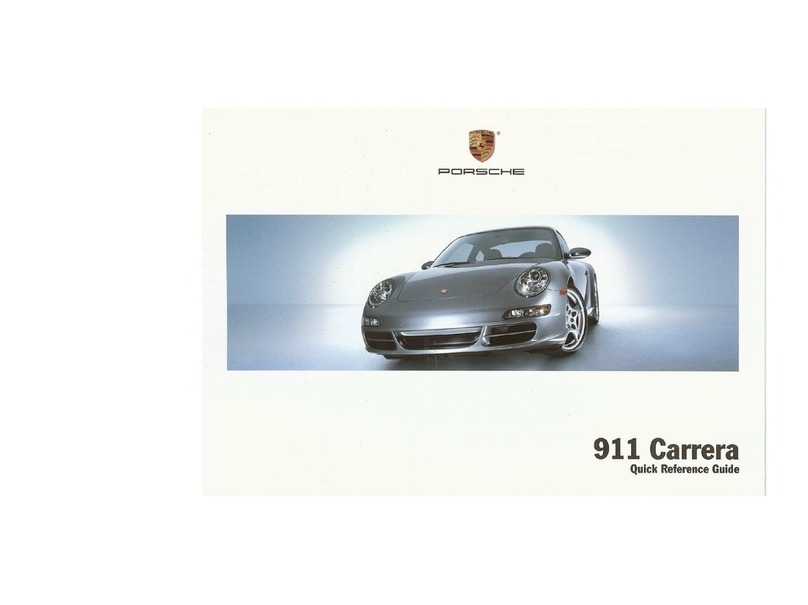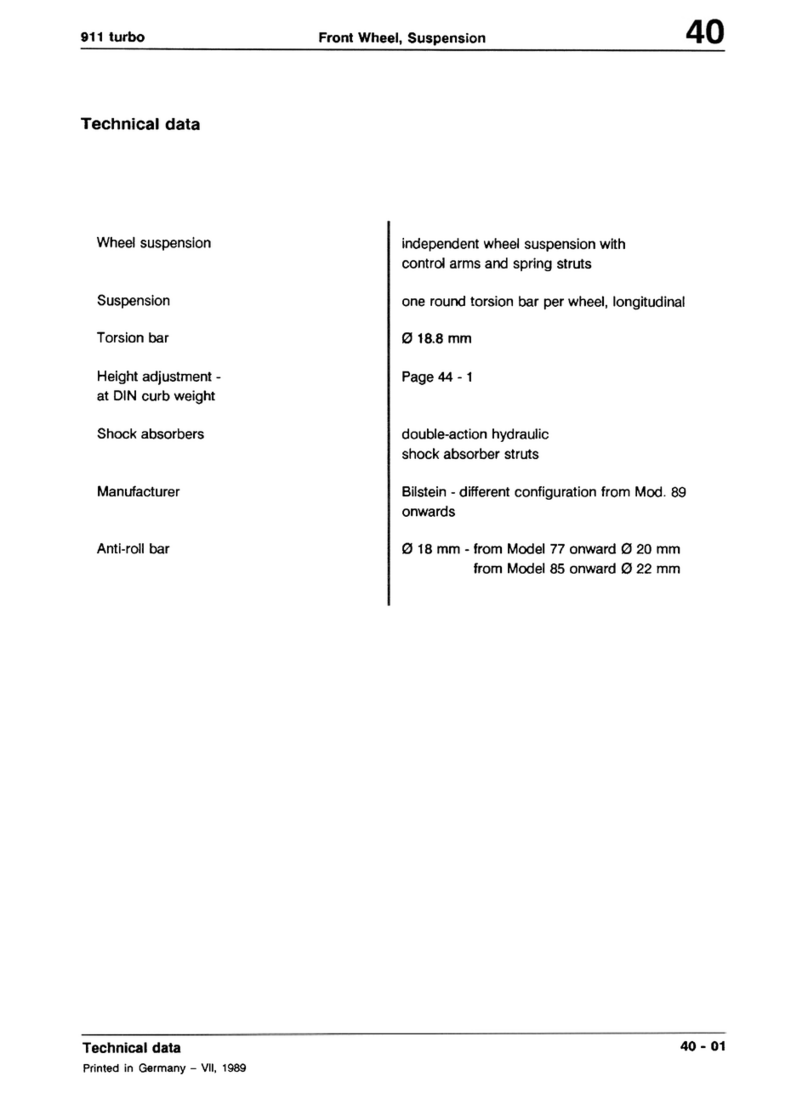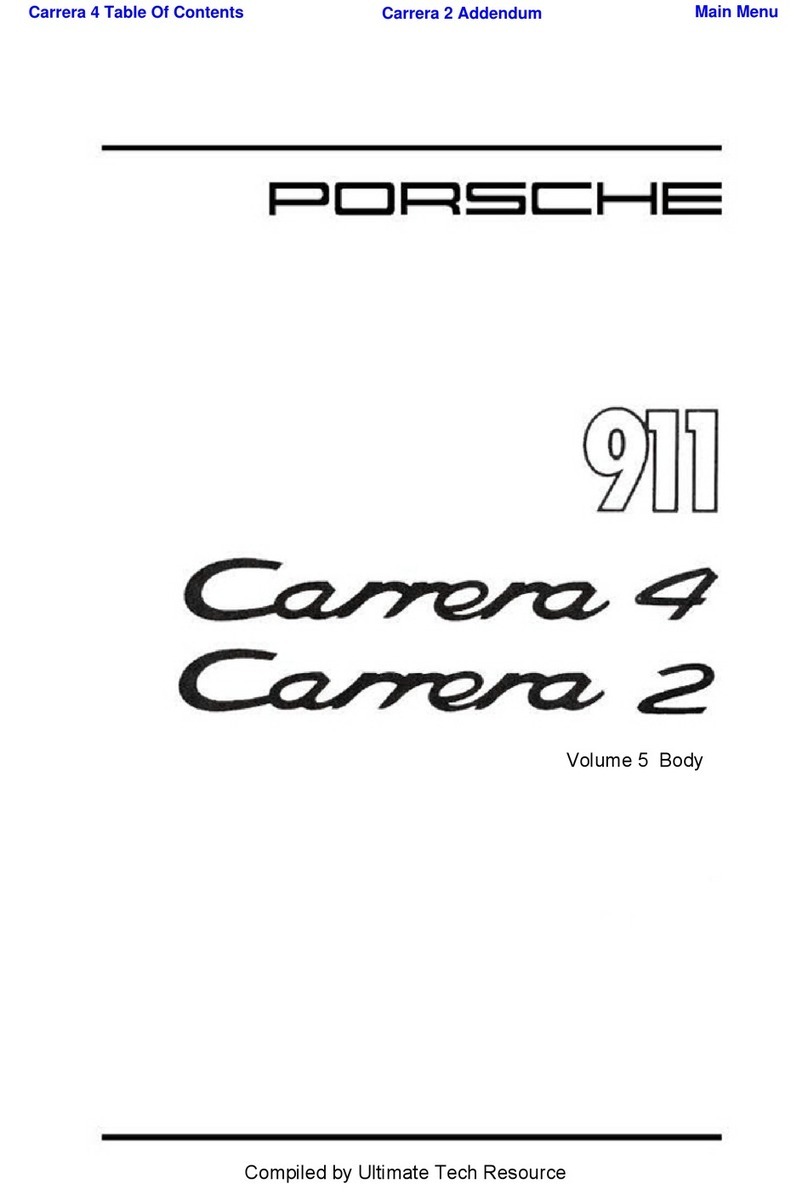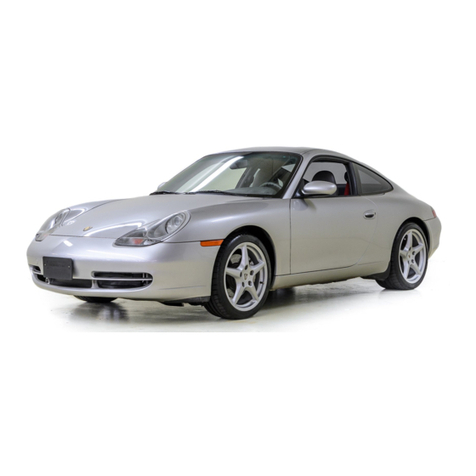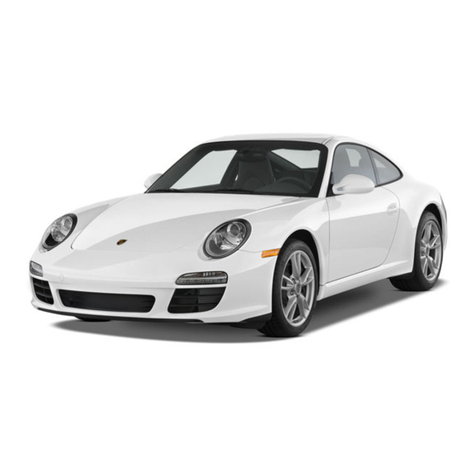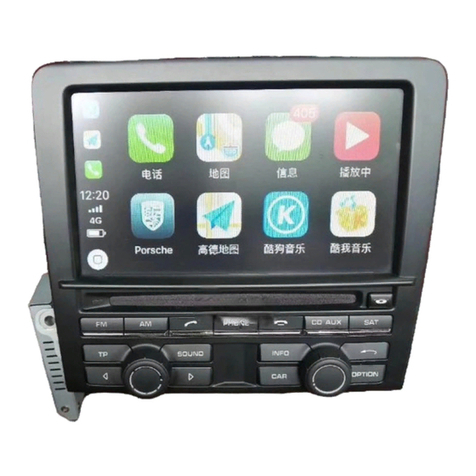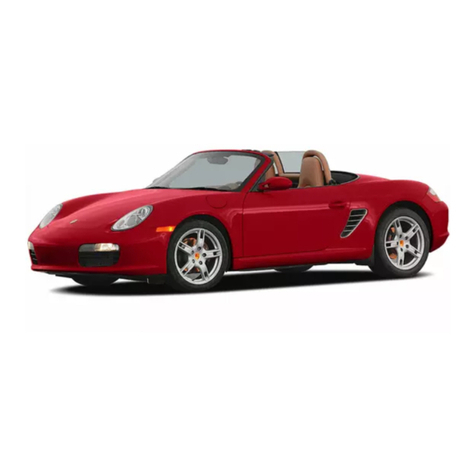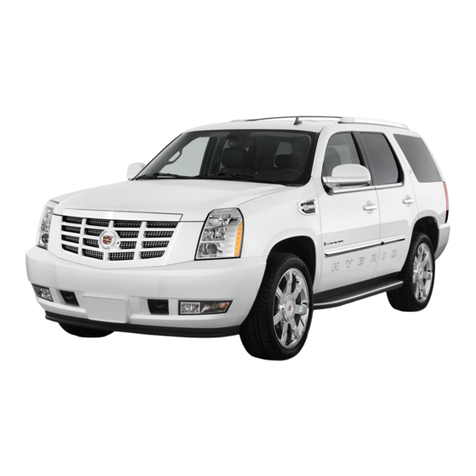
Break-in Hints for the first
1.000 miles/1.600 kilometers
There are no specific break-in rules for your
Porsche. However, by taking a few preàau_
tions you can help extend the service iife and
performance of your engine.
During the first 1,000 miles/1 ,600 km. all
working components of the engine adjust to
each other to a certain degree_ Therefore:
Avoid f ull throttle starts and abrupt stops.
Change speeds frequently. Vary the throttle
load.
Do not exceed max. engine speed of 4,500
rpm (revolutions per minute).
Do not run a cold engine at high rpm or in
Neutral.
Do not let the engine labor, especially when
driving uphill. Shift to the next lower gear in
time (use the most favorable rpm ,ange;.
There may be a slight stjffness in the steer_
ing, gearshifting or other controls during the
break-in period which will gradually disap-pear.
Never lug the engine in high gear at low
speeds. This rule applies all the time, not
just during the break-in period.
Breaking-in brake pads
Brake pads do not have maximum braking
efficiency when the car is new. Therefore,
more pedal force is necessary during the first
100 to 150 miles/1 50 to 250 km. This also
applies to replacement brake pads.
Breaking-in new tires
New tires do not have maximum traction.
They tend to be slippery. Break in new tires
by driving at rnoderate speeds during the first
60 to 120 mlles/lOO to 200 km, and longer
braking distances must be anticipated.
Engine Oil Consumption
During the break-in period oil consumption
may be higher than normal.
As always the rate of oil consumption de_
pends on the quality and viscosity of oil, the
speed at which the engine is operated, the
climate, road conditions as well as the
amount of dilution and oxidation of the lubri_
cant.
C-heck engine orl level, add if necessary.
Make it a habit to have engine oil checked
with every fuel filling.
Engine Exhaust
WARNING
. Engine exhaust is dangerous if inhaled.
. Never start or let the engine run in a
closed garage. Never sit in your car for
prolonged periods with the engine on and
the car not moving.
' Although exhaust fumes from the engine
have many components wnicfr you ian
smell, they also contain carbon monoxide,
which is a colorless and odorless gas, i
Carbon monoxide can be r"tài it irr,"r"T" ]
. lf you smell gas fumes in the vehicle,
drive with the windows open to prevent
poisonous exhaust gas from being drawnj
into the vehicle. Have the cause immedi_]
ately located and corrected. j
' Never cany additional fuel containers in
your vehicle. Such containers, full or par_
tially empty, may leak, ."rr" "n "ôlo-
sion, or result in fire in case of a coliision.
Ë
Ei
7
..>
-
t;
eè
?
-
e
æ
E
É!
é
E:"
te-
E:'
CË.
ê=
e-
è:
€r
É-
ë
É
c=
-
